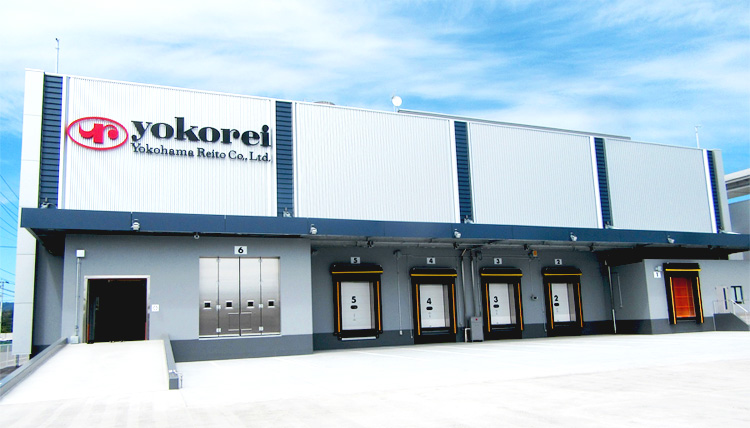EnvironmentInitiatives Reducing Environmental Impact
- Home
- Sustainability
- Environment
- Initiatives Reducing Environmental Impact
Measures for the effective use of resources and reducing waste
Effective Use of Remnants from Marine Product Processing at Kesennuma Sales Office
At Kesennuma Sorting Spot, which has facilities for sorting and freezing marine products, remnants (inedible products) from the work process are treated and sold to local fish meal producers. At the fish meal producers, the treated remnants are used to produce fish meal and fish oil. These are raw materials for feed for cultivated fish. This is how we work to reduce marine product waste through collaboration with local companies and also promote a recycling-oriented marine products industry.

Water Resource Initiatives
At Yokorei, we use a lot of water in mainly the refrigerated warehousing business, chiefly by supplying makeup water for refrigerated warehouse cooling towers.
Given that conserving water resources is one key issue in society, water conservation is one of the guiding principles in our Environmental Policy and we are working hard to reduce the amount of water consumed in our business operations. Having formulated water management plans at 49 sites in the refrigerated warehousing business, which accounts for roughly 56% of all 87 locations comprised of the domestic business sites in the refrigerated warehousing, food sales, and customs clearance businesses, as well as overseas consolidated subsidiaries, we are gauging water intake volumes, managing the quality of wastewater, and even recycling some water resources.
Measures for reducing water usage
Introduction of scrubber machines
At Yokorei, we are changing the way we clean the cargo handling floors of our refrigerated warehouses by switching from high-pressure washers to scrubber machines. We therefore expect to greatly reduce the amount of water we use for cleaning; for example, a high-pressure washer requires 30,000 liters of water to clean a floor area of 3,000m2, but a scrubber machine can clean the same area with only 80 liters of water. We are already using scrubbers at all of our business sites in Japan and we will continue to introduce them elsewhere going forward.
Introduction of closed-circuit cooling towers
There are two types of cooling towers used to chill water in a cooling system: open circuit and closed circuit. An open-circuit cooling tower requires periodic open cleaning of the condenser and roughly 2,000 liters of water is needed to clean a single unit. A closed-circuit cooling tower, on the other hand, semi-permanently does not require condenser cleaning and therefore uses no water at all for cleaning. This is why at Yokorei we are adopting the use of closed-circuit cooling towers in new refrigerated warehouses and when we upgrade existing cooling systems.
Use of multi-cell cooling towers
At Yokorei, we make use of multi-cell (decentralized) cooling towers in our refrigerated warehouses, thereby controlling the number of units operating according to the refrigeration load. For example, to refrigerate 300 tons we use three cells in one cooling tower, each refrigerating 100 tons. We can therefore limit the amount of water consumed to one third when refrigerating only 100 tons by operating only one cell.
Assessing water risks
At Yokorei, we are using the Aqueduct* tool of the World Resources Institute (WRI) to assess water risks at our business sites. We are assessing water stress levels and water usage amounts at each site and implementing measures primarily geared towards the effective use of water resources.
Water stress assessment with WRI's Aqueduct Water Risk Atlas
| Water Stress Level | Sites | Water Intake (m3) in FY2023 |
|---|---|---|
| Extremely High (>80%) | 0 | 0 |
| High (40-80%) | 0 | 0 |
| Medium - High (20-40%) | 20 | 167,418 |
| Low - Medium (10-20%) | 26 | 278,803 |
| Low (<10%) | 5 | 64,756 |
| 合計 | 51 | 510,977 |
-
- Scope of assessment:
- All 49 sites in Japan in the refrigerated warehousing business and the Hirado Ice Factory (water usage in the food sales business is excluded because it is less than 1% of the refrigerated warehousing business).
The risk of water shortages at our sites in Japan is low, but we will continually endeavor to reduce our water usage and adopt measures to combat flood damage and other water risks.
